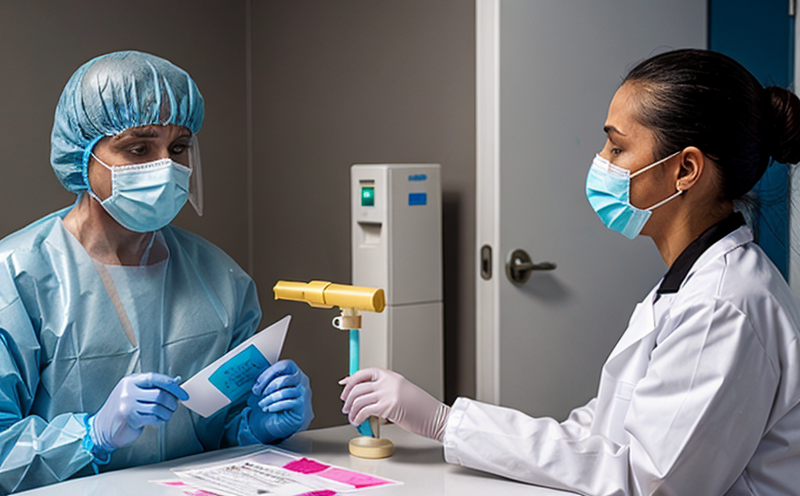Clostridium perfringens Testing in Ready-to-Eat Foods
In the realm of clinical and healthcare testing, particularly within infectious disease testing, ensuring the safety of ready-to-eat (RTE) foods is paramount. Clostridium perfringens testing plays a critical role in safeguarding public health by identifying potential sources of foodborne illness. This bacterium can produce toxins that cause severe gastrointestinal distress when consumed in sufficient quantities.
Ready-to-eat foods encompass a wide variety of products, including deli meats, poultry products, and other sliced or prepared meals intended for immediate consumption without further cooking. The presence of Clostridium perfringens in these products can lead to significant health risks if the bacteria multiply and produce toxins during storage.
The testing process involves several key steps. Initially, samples are collected from various points within the production line or retail environment where RTE foods are handled. These samples undergo a series of laboratory procedures designed to detect even trace amounts of the bacterium. The testing method typically follows international standards such as ISO 6817 and ASTM E2309.
The methodology involves sample preparation, which includes homogenization and dilution steps to ensure accurate quantification of the bacteria. After preparation, the samples are plated onto selective media that promotes growth only in the presence of Clostridium perfringens. Positive cultures are then identified through biochemical tests and serological analysis.
Accurate testing is essential for maintaining compliance with regulatory standards like those set by the FDA’s FSMA (Food Safety Modernization Act) and international guidelines. Compliance officers rely on these results to ensure that their products meet both internal quality control expectations and external regulatory requirements.
The importance of Clostridium perfringens testing extends beyond just identifying contamination; it serves as a proactive measure in preventing foodborne illness outbreaks. By implementing robust testing protocols, companies can minimize the risk of recalls and associated financial losses while enhancing consumer trust.
Scope and Methodology
The scope of Clostridium perfringens testing in RTE foods is comprehensive. It encompasses the entire supply chain, from raw material procurement to final product distribution. The methodology adheres strictly to recognized international standards such as ISO 6817, which provides a framework for sample collection and processing.
- Sample Collection: Samples are taken at multiple stages including initial processing, during packaging, and post-packaging in the retail environment.
- Preparation: Homogenization and dilution ensure that the bacteria present can be accurately quantified.
- Isolation: Selective media is used to isolate Clostridium perfringens from other microorganisms.
- Identification: Biochemical tests and serological analysis are employed for definitive identification.
Benefits
The primary benefit of Clostridium perfringens testing lies in its ability to provide early detection of potential contamination. This allows food manufacturers and processors to address issues promptly, thereby minimizing the risk of product recalls and associated reputational damage.
From an operational standpoint, regular testing enhances overall quality assurance by identifying and rectifying any lapses in hygiene practices or storage conditions. For compliance officers, this translates into reduced legal risks and strengthened adherence to regulatory standards.
In terms of public health, the use of robust Clostridium perfringens testing contributes significantly to reducing incidences of foodborne illness. This is especially crucial given the increasing demand for RTE foods due to convenience and lifestyle preferences.
Competitive Advantage and Market Impact
- Informed Decision-Making: Early detection allows companies to make informed decisions regarding supply chain management, ensuring that only safe products reach the market.
- Enhanced Reputation: By demonstrating a commitment to food safety and quality, businesses can build stronger relationships with consumers and stakeholders.
- Minimized Risk: Reducing the risk of recalls not only saves costs but also protects brand integrity.
- Innovation Opportunities: The ability to identify contamination early opens up opportunities for process improvements and product innovation.





